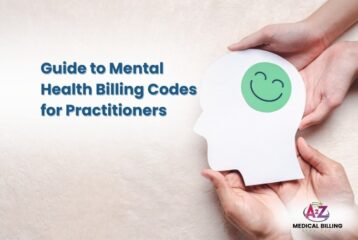Accurate billing in podiatry is critical for maintaining the financial health of a practice and ensuring compliance with healthcare regulations. It is essential to know, how to use these codes to facilitate smoother claims processing and optimize practice revenue.
The “Podiatry Billing Cheat Sheet” provides an important resource for understanding the specifics of billing codes, including CPT and ICD-10 codes relevant to podiatry.
The guide emphasizes, the importance of staying updated with the latest coding changes and regulatory requirements to ensure compliance and effective practice management.
Overview of Podiatry Billing Cheat Sheet
Accurate billing is crucial in podiatry, directly impacting financial health and compliance with healthcare regulations. This section explains the variations of the “Podiatry Billing Cheat Sheet,” and the need for precise documentation to update codes to prevent revenue loss and avoid potential legal complications.
Importance of Accurate Billing in the Podiatry Billing Cheat Sheet
In podiatry, the accurate billing goes under simple financial transactions; it is integral to maintaining legal compliance and securing revenue. Here we discuss the consequences of the importance of robust billing practices within the “Podiatry Billing Cheat Sheet.”:
- Financial and Legal Significance: Accurate billing is essential for maximizing revenue and ensuring compliance with legal standards in healthcare.
- Consequences of Billing Errors: Errors can lead to claim denials and audits, resulting in financial losses and administrative burdens for podiatry practices.
- Potential for Revenue Loss and Legal Issues: Inaccurate billing practices can trigger costly legal problems and significant revenue shortfalls due to non-compliance penalties and reduced reimbursements.
Key Challenges in Podiatry Billing Cheat Sheet
Podiatry presents unique billing challenges that can complicate the reimbursement process.
- Common Challenges: Podiatry practices often face challenges like coding complexities, frequent updates to billing regulations, and managing billing for specialized treatments.
- Overcoming Challenges: Implementing advanced billing software and continuous training can help practices stay current on coding changes and improve accuracy.
- Practical Examples: Using automated coding tools can reduce human error, while regular workshops ensure staff are aware of the latest billing practices and compliance requirements.
Understanding Podiatry CPT Codes
Current Procedural Terminology (CPT) codes and their critical role in podiatry billing cheat sheet, emphasizing their necessity for compliance and reimbursement.
How to Use CPT Codes Effectively
Accurate application of CPT codes is fundamental in minimizing claim denials and optimizing revenue flow in podiatry practices.
- Best Practices for CPT Coding: Ensure correct code selection by regularly training staff on updates and verifying codes against the latest CPT manuals to prevent errors like using outdated or overly broad codes.
- Impact on Reimbursements: Accurate CPT coding ensures claims are approved promptly and reimbursed correctly, which is crucial for maintaining the financial stability of a podiatry practice.
Common Podiatry CPT Codes
Common CPT codes used in podiatry along with their descriptions. This should provide a quick reference to the codes frequently applied in podiatry treatments and diagnostics:
| CPT Codes | Description |
| 11721 | Debridement of the nail(s) by any method(s); six or more nails |
| 28122 | Partial excision (craterization, saucerization, or diaphysectomy) of bone (e.g., osteomyelitis or bossing); tarsal or metatarsal |
| 10060 | Incision and drainage of abscess (e.g., carbuncle, suppurative hidradenitis, cutaneous or subcutaneous abscess, cyst, furuncle, or paronychia); simple or single |
| 10061 | Incision and drainage of abscess; complicated or multiple |
| 11730 | Avulsion of nail plate, partial or complete, simple; single |
| 11732 | Avulsion of the nail plate, partial or complete, simple; each additional nail plate (List separately in addition to code for primary procedure) |
| 11750 | Excision of nail and nail matrix, partial or complete (e.g., ingrown or deformed nail), for permanent removal |
| 28001 | Incision and drainage of abscess; bursa, foot |
| 28292 | Correction, hallux valgus (bunion), with or without sesamoidectomy; simple exostectomy (e.g., Silver type procedure) |
| 28285 | Correction, hammertoe (e.g., interphalangeal fusion, partial or total phalangectomy) |
| 28308 | Osteotomy, with or without lengthening, shortening, or angulation, metatarsal; other than the first metatarsal, each |
| 28045 | Excision, tumor, foot; deep, subfascial, intramuscular |
| 28470 | Closed treatment of metatarsal fracture; without manipulation, each |
| 28615 | Open treatment of metatarsophalangeal joint dislocation includes internal fixation when performed |
Common Modifiers Used in Podiatry Billing Cheat Sheet
Common modifiers used in podiatry billing, which are crucial for specifying details about the services provided:
| Modifier | Description |
| -25 | Significant, separately identifiable evaluation and management service by the same physician on the same day of the procedure or other service |
| -50 | Bilateral procedure, indicating the same procedure was performed on both sides of the body |
| -51 | Multiple procedures performed during the same surgical session |
| -59 | Distinct procedural service, indicating that services that are normally bundled into one payment were provided as separate services |
| -RT | Right side (used to specify a procedure performed on the right side of the body) |
| -LT | Left side (used to specify a procedure performed on the left side of the body) |
| -TC | Technical component, indicating only the technical part was performed |
| -26 | Professional component, indicating only the professional part was performed |
| -76 | Repeat the procedure by the same physician |
| -79 | Unrelated procedure or service by the same physician during the postoperative period |
| -GA | Waiver of liability statement issued as required by payer policy |
| -Q7, Q8, Q9 | Class A, B, or C findings, respectively, which are used for routine foot care related to systemic conditions |
Challenges in Podiatry Billing: Understand Key Hurdles
Effective management of podiatry billing challenges is essential for any practice aiming to enhance its revenue cycle. This guide “Podiatry Billing Cheat Sheet” provides actionable strategies to address common billing issues and ensure compliance and efficiency.
Common Issues and How to Address Them
Podiatry billing presents unique challenges that can disrupt the financial flow of practices. This section explores frequent billing issues and provides effective solutions to overcome these hurdles.
- Complexity of Podiatry CPT Codes: Podiatry includes specific procedures that often get miscoded. Providing training for billers on podiatry-specific codes can significantly reduce errors.
- Up-to-date Billing Practices: Regulations and codes change frequently. Regular training sessions and updates for billing staff are crucial to stay compliant and efficient.
- Handling Claim Denials: Incorrect or incomplete claims are common. Establishing a detailed checklist for claim submission and a robust process for handling denials can improve approval rates.
- Effective Use of Billing Software: Many practices can not fully utilize their billing software’s features. Training to leverage all functionalities of the software can enhance efficiency.
- Insurance Variabilities: Understanding the specifics of various insurance plans is essential. Creating a database of insurance requirements and regularly updating it can prevent billing issues.
Conclusion
The “Podiatry Billing Cheat Sheet” is crucial for understanding the complexities of billing in podiatry. Understanding CPT codes, correctly using modifiers, and keeping up-to-date with billing regulations are essential for reducing errors and maximizing revenue. This guide provides practical strategies to ensure compliance and efficiency in billing practices. Also, support the financial health and operational effectiveness of podiatry practices. Through diligent application of these practices, podiatrists can enhance patient care and secure the sustainability of their operations.
FAQs
1. What are the most common podiatry CPT codes?
Common podiatry CPT codes include 11721 for nail debridement and 28292 for bunion correction.
2. How can accurate CPT coding enhance reimbursement in podiatry?
Accurate CPT coding ensures claims are approved and reimbursed correctly, maintaining the practice’s financial health.
3. What are common modifiers used in podiatry billing?
Common modifiers include -25 for significant, separate evaluations and -59 for distinct procedural services.
4. What challenges are commonly faced in podiatry billing?
Challenges include managing complex codes, staying updated with regulations, and handling insurance variability.
5. How can podiatry practices improve their billing processes?
Regular training, advanced billing software, and an updated insurance requirement database can enhance billing efficiency.



